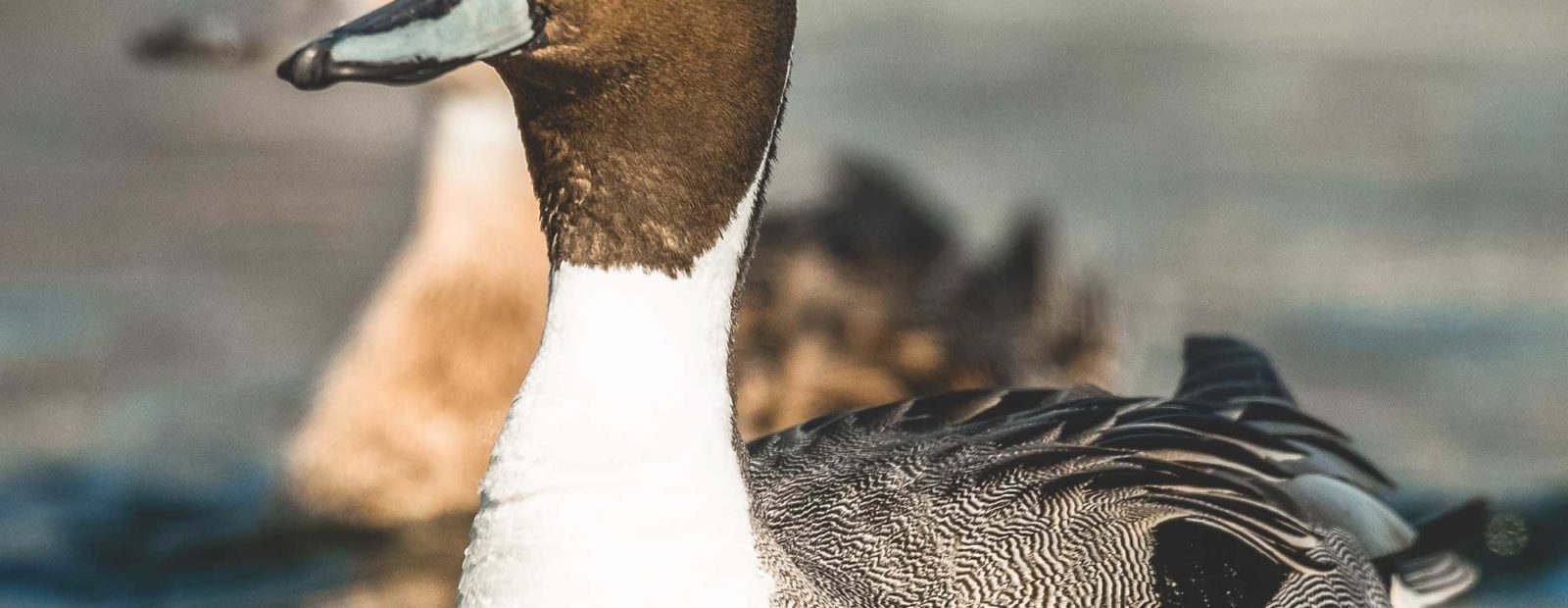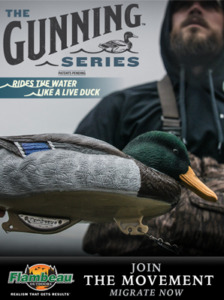The Graceful Greyhound of the Sky
The Northern pintail (Anas acuta) is a duck species that truly looks more like a painting than a real animal. Like the beautiful wood duck, drake pintails are stunning in a different way. Their sleek bodies and elegant form help them stand out among the rounder duck species. While they occur throughout the world and are quite numerous, they do face some critical conservation struggles today that need addressing. Spend some time acquainting yourself with this amazing duck species if you’re not very familiar with them.
Description and Life History of the Northern Pintail
The Northern pintail is a medium sized duck, measuring about 21 to 26 inches in length and weighing anywhere from 1.9 to 2.3 pounds on average (Ducks Unlimited 2019; NatureServe 2019). As with most ducks, they display sexual dimorphism, meaning males look different from females. In general, they both have a sleek body, long neck, and slender wings, but males have a longer black pointed tail, which is obviously where their name comes from. Breeding drakes have chocolate-colored heads with a white stripe extending up the back of their head. Their necks and breasts are bright white and their body feathers are an intricate pattern of gray and white (National Audubon Society 2019). In flight, their wings have a green and white speculum. Their bills and feet are dark gray to black in color. Hens are uniformly mottled brown and tan, with light tan heads and a brownish-bronze speculum showing on their wings in flight (All About Birds 2019). Non-breeding males look much more similar to hens.
Northern pintails are early breeders, often showing up in northern breeding grounds as soon as the ice thaws. Drakes and hens often pair up in southern wintering grounds, when drakes stretch their necks up and down while making a whistling call to attract females (All About Birds 2019). Females choose the nest site, which can often be far from water in several different short grassland or cropland habitats, even right in a tilled field. The female makes several scrapes on the ground and lines one with grasses and her own downy feathers. She typically lays a clutch of 3 to 12 greenish buff eggs and incubates them by herself for about 21 to 25 days (All About Birds 2019; NatureServe 2019). Males often abandon the hen during the incubation period to flock up with other males. Soon after hatching, the hen leads the precocial ducklings away from the nest and tends to them, although they can feed themselves. They can fly at 5 to 7 weeks (National Audubon Society 2019).

The Northern pintail is a dabbling duck, like the mallard, and so it feeds by floating in the water and dipping their heads underwater or up-ending (National Audubon Society 2019). They feed on seeds and nutlets of several aquatic plants (i.e., sedges, grasses, pondweeds, smartweeds), but they will also eat mollusks, crabs, tadpoles, minnows, worms, fairy shrimp, and aquatic insects (National Audubon Society 2019, NatureServe 2019). In cultivated fields, they are very capable of walking overland to consume standing or waste grain (e.g., rice, wheat, corn, barley, etc.).
Like most waterfowl species, adult ducks are susceptible to aerial predators, including several hawk species. But the biggest threat is usually to eggs, ducklings, and incubating females. Crows, gulls, magpies, coyotes, foxes, bobcats, skunks, raccoons, and badgers all commonly prey on the eggs or adult pintails (The National Wildlife Federation 2019). It is possible that their early nesting period puts them at additional risk of predation.
Range and Habitat of the Northern Pintail
The Northern pintail occurs across a very large range in North America, breeding all the way north to Alaska and Canada in the summer and migrating as far south as South America in the winter (NatureServe 2019). Populations also occur in Europe, the Middle East, India, and Asia, making them one of the most numerous ducks in the world (All About Birds 2019; National Audubon Society 2019).
The Northern pintail can occur in several different habitat types throughout the year. The usual lakes, rivers, marshes, sloughs, and ponds are good bets for the pintail in wintering grounds. But during the summer breeding period, it shows a preference for grasslands with short vegetation, including short grass prairies, pastures, crop fields, and tundra, provided water sources are located within a half mile (National Audubon Society 2019; NatureServe 2019). Pintails tend to nest in much more open areas than many other duck species. The prairie pothole region in the center of the country is a prime habitat for this species, as it provides grasslands and farm fields in close proximity to small seasonal water sources.
Conservation Issues for the Northern Pintail
The Northern pintail is listed as globally secure and of Least Concern by the IUCN Red List (NatureServe 2019). However, populations declined by 70 percent between 1966 and 2015 and again declined in 2018 versus 2017 (U.S. Fish and Wildlife Service 2018). The current global breeding population is estimated to be 4.8 million birds (All About Birds 2019). Droughts, loss of wetland habitats, conversion of grasslands to farmland, and badly timed agricultural practices (e.g., nest destruction) are thought to be the primary threats facing this species. Using the prairie pothole region as an example, vast stretches of this habitat have been destroyed or altered by the threats mentioned. Additionally, around a half million Northern pintails are harvested in North America each year (All About Birds 2019). While it is not expected that this impacts populations much, it is closely regulated each season.
Hunting Opportunities for the Northern Pintail
While they are still somewhat common birds, they certainly aren’t as numerous as mallards. And because they can be so cautious, you might have a tough time coaxing any pintails into range. But don’t give up; they are unique looking ducks and most hunters feel grateful to get one. Here are a few tips to help you key in on one.
Equipment and Bag Limits
Northern pintails aren’t huge ducks, so some basic hunting gear will do. If you plan to hunt crop fields, you don’t need much gear at all – just a shotgun, a blind of some sort, and some decoys. If you are hunting over shallow ponds, you should also bring some waders to retrieve fallen ducks. A 12-gauge shotgun is the perfect choice for most duck hunting. If you know the pintails will be spooky where you plan to hunt, try shooting a full choke to give you a little more distance. But you should always try different chokes and loads and see how your shotgun patterns them before you hunt. Generally, 3-inch shells with non-toxic shot sizes of No. 3 or 4 are fine for ducks of this size.
As with other migratory bird species, you will need to buy a federal duck stamp, which supports habitat and research efforts for waterfowl species. The current daily bag limit for northern pintail is two birds, but after their population decline in 2018, it is possible the daily bag limit could drop to its historic level of one bird.
Northern Pintail Hunting Techniques
Since Northern pintails don’t have a problem with nesting and feeding in relatively open farmland settings, they can be hunted in the same situations fairly easily. Pintails are social birds and do not mind mingling with other species, which is a big advantage for you. By adding a dozen pintail decoys to a spread with other duck species, you might be able to get a mixed bag hunt and harvest a few mallards at the same time. As many drakes flock up and migrate before northern hunting seasons, you might only catch hens. But further south, especially in states like California or Texas, you will likely see a lot of drake pintails.
Northern pintails are pretty cautious birds and will flush at the hint of danger, so jump shooting is usually not very effective. Even hunting over a well-concealed blind on a flooded field or shallow water source, pintails approach very slowly. Make sure you have a gun and load that is patterned for shooting accurately out a good distance – the full choke will help with that. You will always need to lead them appropriately based on how fast they are flying. If they commit to the spread, pintails tend to slow down significantly before landing, which should give you a better shot to make your pintail hunt just a little better.
Sources:
All About Birds. 2019. Northern Pintail. Accessed at: https://www.allaboutbirds.org/guide/Northern_Pintail
Ducks Unlimited. 2019. Northern Pintail. Accessed at: http://www.ducks.org/hunting/waterfowl-id/northern-pintail
NatureServe. 2019. NatureServe Explorer: An online encyclopedia of life. Accessed at: http://explorer.natureserve.org
National Audubon Society. 2019. Guide to North American Birds. Accessed at: https://www.audubon.org/field-guide/bird/northern-pintail
The National Wildlife Federation. 2019. Northern Pintail. Accessed at: https://www.nwf.org/Educational-Resources/Wildlife-Guide/Birds/Northern-Pintail
U.S. Fish and Wildlife Service. 2018. Waterfowl population status, 2018. U.S. Department of the Interior, Washington, D.C. USA. Accessed at: https://www.fws.gov/migratorybirds/pdf/surveys-and-data/Population-status/Waterfowl/WaterfowlPopulationStatusReport18.pdf
Last modified: July 19, 2022










0 Responses to :
Northern Pintail – A Waterfowl Species Profile